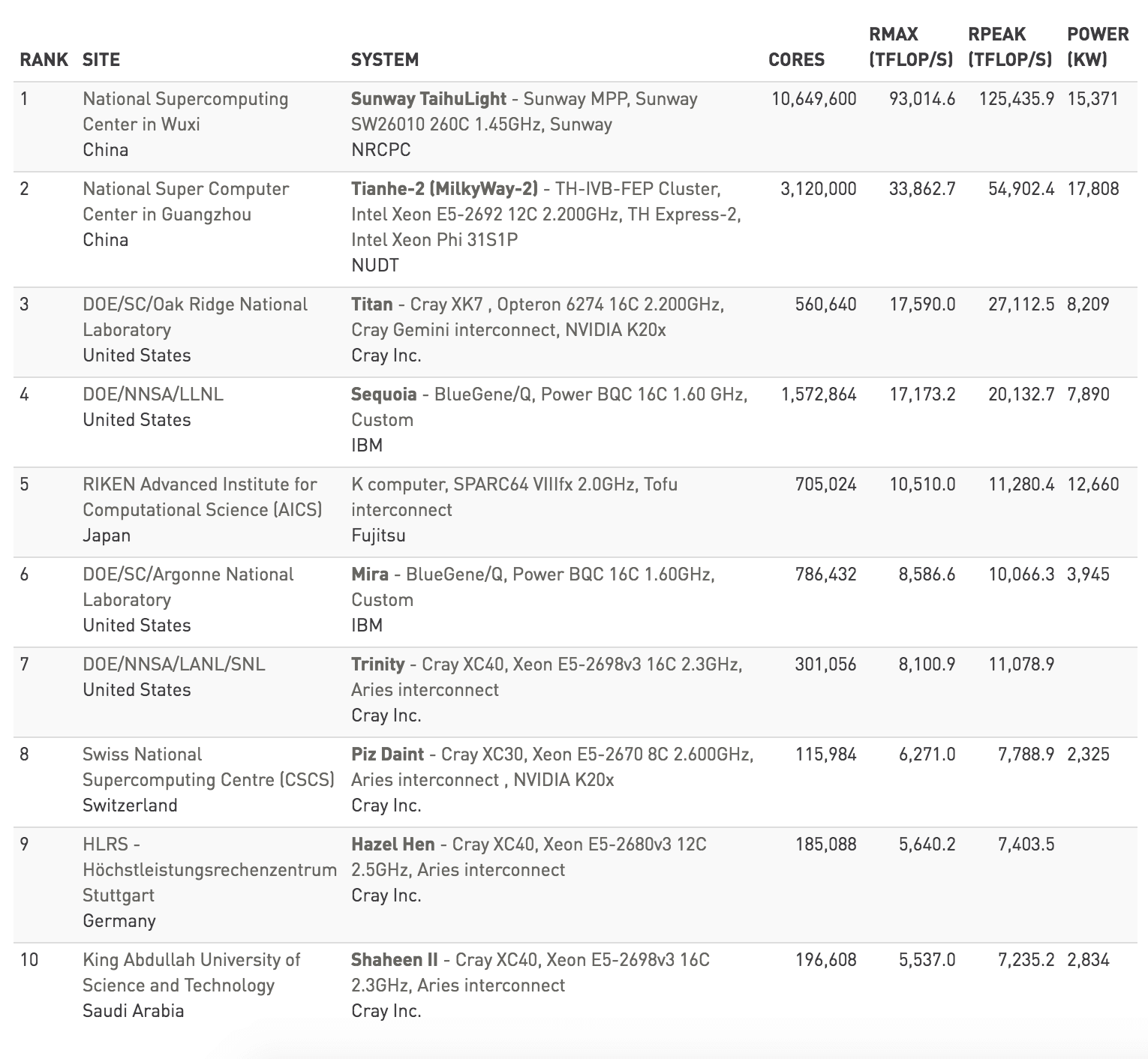TOP500 has just released its latest bi-annual list of the world's fastest supercomputers, and June's rankings show two firsts for China: the country has more machines in the top 500 than the US, and the world's most powerful computer is powered by processors designed and manufactured in the Asian nation.
The Chinese-built Tianhe-2 had held the title of world's fastest supercomputer for the last three years, but it has been knocked off the number one spot by a new machine called Sunway TaihuLight.
With its Linpack benchmark of 93 petaflops, Sunway TaihuLight is more than twice as powerful as Tianhe-2, and about five times faster than the highest-ranking US machine, the third-placed Titan Cray XK7.
While the US may only hold the third position in the supercomputer rankings, it's still able to boast the fact that most of the machines in the top 500 contain technology from American companies - even Tianhe-2 is packed with chips from Intel. But China is trying to move away from its dependence on imported technology; Sunway TaihuLight is powered by a SW26010 processor designed by the state-owned Shanghai High Performance IC Design Center.
"As the first number one system of China that is completely based on homegrown processors, the Sunway TaihuLight system demonstrates the significant progress that China has made in the domain of designing and manufacturing large-scale computation systems," said Wuxi National Supercomputing Center director Prof. Dr. Guangwen Yang.

The second major achievement for China is that this 47th edition of the list marks the first time the country has more machines in the rankings than the US. There are now 167 supercomputers in the top 500 located in China, compared to 165 that are based in America. In 2001, no Chinese computers made it onto the top 500.
But the US may challenge China's dominance in 2018, when the Department of Energy's Summit system is scheduled to come online. It will deliver five times the computational performance of Titan's 18,688 nodes, supporting speeds of up to 300 petaflops.
Last year, President Obama authorized the creation of the world's first exascale computer that will theoretically be able to perform one quintillion (a billion billion) calculations per second, or 1000 petaflops. There's no timescale for its creation, but the US will doubtlessly be hoping it can develop the supercomputer before China.
